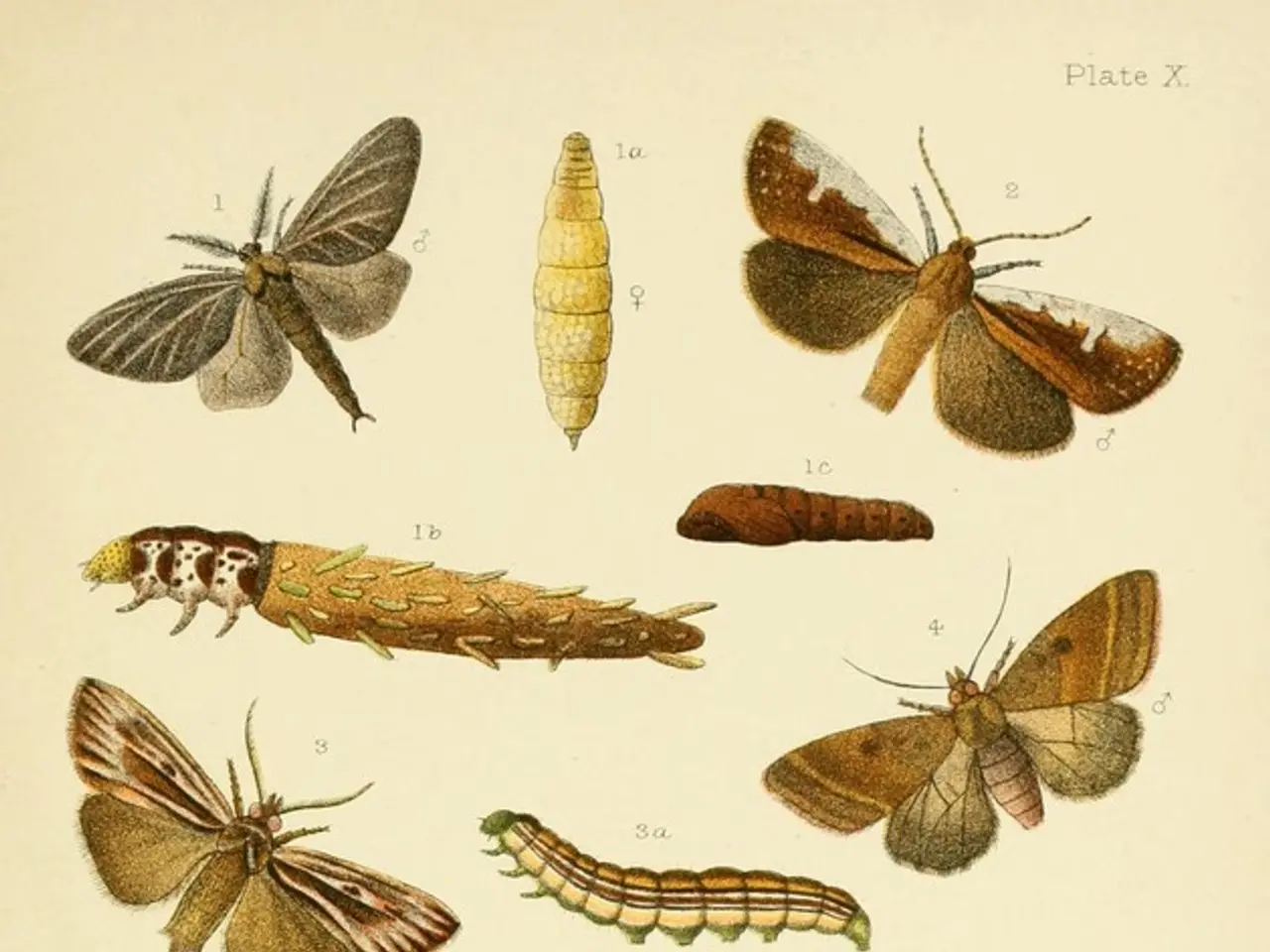Sphinx Moths Swarm Ohio Skies: The Aerial Phenomenon in Ohio
In the vibrant world of nocturnal and crepuscular insects, Sphinx moths, also known as hummingbird moths, stand out for their striking appearances and behavior that mimics hummingbirds. Belonging to the family Sphingidae, these large insects are found worldwide, with over 1,400 species, including 115 in North America.
Sphinx moths are known for their stout abdomens, front wings much larger than the back wings, and extremely long tongues (proboscises). These features allow them to feed on a variety of flowers, providing important pollination services for gardens. However, their caterpillars, or hornworms, can sometimes be infamous as garden pests.
One such caterpillar is the tomato hornworm, a gluttonous creature that feeds on the same nightshade plants as the tobacco hornworm. The tomato hornworm can be green or dark brown, and its stripes are completely white and shaped like sideways Vs. Its horn is black rather than red, a difference that sets it apart from the tobacco hornworm.
Another interesting species is the Snowberry clearwing, a diurnal Sphingidae species with yellow and black body patterns and clear wings, mimicking a bumble bee. In the Midwest, it is most abundant in early to midsummer, feeding on native honeysuckle, dogbane, hawthorn, viburnum, and cherry and plum trees.
The white-lined sphinx moth, active from May to June, pollinates a wide range of plants in the eastern United States, including evening primrose, honeysuckle, lilacs, red clover, bouncing bet, moonflower, American aloe, columbine, and phlox in the Southwest. It is recognizable by the thick, pale, diagonal lines running across each of its front wings, the vertical white stripes on its thorax, and the pink bands on its back wings.
The five-spotted hawk moth, more abundant in the North than the South, feeds on night-blooming or crepuscular flowers such as phlox, bouncing bet, and sundrops, in addition to moonflowers, tobacco, petunias, and honeysuckle. It is distinguished from the tobacco hawk moth by having five pairs of orange spots along its abdomen, compared to six pairs on the tobacco hawk moth. Its active season is earlier than the tobacco hawk moth, starting in late June and extending to early September.
Sphinx moth caterpillars, like the Snowberry clearwing caterpillars, often possess horn-like spikes on their back ends to intimidate and defend against predators. They come in various colours, including light green with a horizontal yellow or yellow-and-black stripe across each side of their body and also have a series of orange or yellow spots parallel to the stripe. Some morphs are mostly black with a little green on the underside of their body.
The research team that conducted the study on Sphingidae in Ohio was led by Ohio State University, highlighting the importance of these fascinating creatures in the local ecosystem. Despite their role as pollinators, Sphinx moths and their caterpillars can sometimes be a nuisance in gardens. However, understanding their behaviour and habits can help gardeners find effective ways to coexist with these beautiful and vital creatures.
Read also:
- Impact of Alcohol on the Human Body: Nine Aspects of Health Alteration Due to Alcohol Consumption
- Understanding the Concept of Obesity
- Tough choices on August 13, 2025 for those born under Aquarius? Consider the advantages and disadvantages to gain guidance
- Microbiome's Impact on Emotional States, Judgement, and Mental Health Conditions








